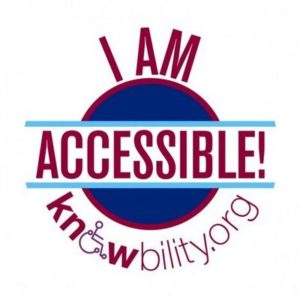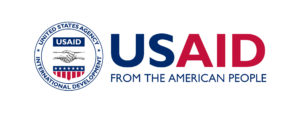In addition to sitting in on various local government meetings in the small town where I live in Oregon, I’ve been volunteering with a local unit of my state’s League of Women Voters, registering voters and sitting in on numerous candidate debates. My goal in these activities, which I’ve said before, is to compare what I’ve seen and experienced abroad working in international aid and development with what happens locally in my own community in the USA.
In doing these activities, I’ve noticed a disturbing trend that greatly affects nonprofits in terms of how the public, the private sector and government think about them, and how the public, the private sector and government feel about their funding and support for such. There is a growing chorus of elected officials and their supporters who say variations of the following:
 There are enough resources in our region, via nonprofits and communities of faith – charity – for anyone who is homeless, who has an addiction or has mental issues to get the help they need. All someone needs to do to get help is to contact those organizations.
There are enough resources in our region, via nonprofits and communities of faith – charity – for anyone who is homeless, who has an addiction or has mental issues to get the help they need. All someone needs to do to get help is to contact those organizations.
There was a time in the USA when poverty was successfully and completely addressed by charity, usually through churches, not by government. Charity used to help all the people that were poor, and we should go back to that way of addressing poverty.
People who have addiction issues, mental issues, homelessness issues or any issues associated with poverty just aren’t working hard enough. They lack morals or willpower and they could stop their drug use or their slide into mental illness simply by choosing to, by really trying.
These statements are not true.
The truth:
Programs that serve the homeless, whether they provide temporary housing or more permanent housing, or even just serve food, are utterly overwhelmed all across the USA and do not have enough resources to help everyone that needs it. Their waiting lists for housing assistance are months, even a few years. And providing food and temporary shelter does not prevent homelessness nor reduce the number of people who are homeless.
Before the creation of Social Security, most people in the USA supported themselves into old age by working. The 1930 census found 58 percent of men over 65 still in the workforce; in contrast, by 2002, the figure was 18 percent. Children and other relatives bore the major cost of supporting the aged. The Great Depression swept this world away: many of the elderly could no longer find work and their family could not afford to support them anymore. To get by in that time, the elderly took to panhandling, moving into dingy, unsafe almshouses or poorhouses, many run by charities or churches, or simply dying impoverished, which was the fate that befell 1 in every 2 older Americans in the years after the 1929 stock market crash.
Homelessness and poverty can be triggered by a range of issues in the USA, including divorce, medical bills/bankruptcy, income vs. housing affordability, decline in public/government assistance and mental health issues. Simply getting a different, better-paying job usually isn’t an option for someone facing homelessness and poverty.
Addiction is a chronic disease that creates a compulsion or even a physical need to use drugs. Drugs, including alcohol, affect the brain’s “reward circuit,” causing euphoria as well as flooding the brain with the chemical messenger dopamine. A properly functioning reward system doesn’t result in addiction. Whether a person is born with a disfunctional reward system or if the disfunction results entirely from drug use continues to be debated and researched; most agree that a combination of genetic, environmental and developmental factors influences risk for addiction, and the more risk factors a person has, the greater the chance that taking drugs can lead to addiction. The initial decision to take drugs is voluntary for most people and often relates to a medical issue rather than recreation, but repeated use of drugs, including alcohol, can lead to brain changes that interfere with an addicted person’s ability to resist intense urges to continue to use. As with most other chronic diseases, such as diabetes, asthma, or heart disease, treatment for drug addiction generally isn’t a cure. Addiction is treatable, however, like other chronic diseases, such as diabetes, asthma, or heart disease, treatment for drug addiction requires professional intervention and guidance – a person can’t address the issues entirely on their own.
So, that’s the truth. But how did the misinformation happen, and how does this misinformation affect nonprofits now?
The misinformation happened not only because of the political agendas of the people saying such; it also has happened because nonprofits have done a poor job of explicitly, frequently talking about the issues they are addressing and educating the public about those issues.
If anyone believes any of these myths, then any sense of urgency regarding homelessness, addiction or poverty vanishes for potential donors, whether individuals or corporate giving programs or foundations. In addition to these myths creating the idea that nonprofits, communities of faith and “charity” can address all the needs of anyone at risk for harm in a community, these myths also create the idea that poverty happens primarily because of bad personal choices: if you’re homeless, then you just have been lazy and not bothered to contact a nonprofit that could help you. If you are addicted to opioids, it’s because you lack willpower.
I’ve been looking at the web sites of various nonprofit organizations serving my communities and various others, and, for the most part, all I see are pleas for support, for donations. What I don’t see:
- a list, with citations, as to what causes a man, a woman or an entire family to be homeless, with profiles of clients (actual names can be changed and photos can be taken in such as way as to hide the identity of clients)
- what activities precede a person becoming addicted to a substance, particularly opioids, with profiles of clients (again, actual names can be changed and photos can be taken in such as way as to hide the identity of clients)
- a list of exactly what donations to a nonprofit pay for (emphasizing why paid staff is needed, rather than relying solely on volunteers helping whenever they might have some time)
- information on the number of people the organization turns away, or puts on waiting lists, because it does not have the resources to help them, information on what activities or services the community needs but that the organization cannot provide because of a lack of resources, etc.
Nonprofits have got to be much more deliberate and direct in all of their communications about the issues they are addressing, why those issues exist, and what resources they lack. If tax cuts and tax breaks for corporations have resulted in less money for these critical services, nonprofits must say so.
Our futures depend on it.
Sources:
Homelessness in Portland, Sept. 26, 2018, Travel Oregon
Roads before homes: Our Homeless Crisis, March 18, 2015, The Oregonian
U.S. Department of Housing and Urban Development. The 2016 Annual Homeless Assessment Report (AHAR) to Congress, November 2016
National Alliance to End Homelessness. Homelessness: A State of Emergency.Feb. 6, 2016
“A Great Calamity Has Come Upon Us”, Jan. 23, 2005, The New York Times
16 Ways People Survived Before Social Security — Could You Do It?, April 12, 2018, GoBankingRates
What causes homelessness, downloaded Nov. 2, 2018
Why Are People Homeless?, July 2009, National Coalition for the Homeless
Understanding Drug Use and Addiction, June 2018, National Institute on Drug Abuse, National Institutes of Health, U.S. Department of Health and Human Services (and see more sources at the end of this NIH article)
Also see:

 There are enough resources in our region, via nonprofits and communities of faith – charity – for anyone who is homeless, who has an addiction or has mental issues to get the help they need. All someone needs to do to get help is to contact those organizations.
There are enough resources in our region, via nonprofits and communities of faith – charity – for anyone who is homeless, who has an addiction or has mental issues to get the help they need. All someone needs to do to get help is to contact those organizations.  There are lots of obstacles that can stand in the way of human, community and institutional development, aid and relief efforts, or government health initiatives, or even elections. But there is one obstacle that, until recently, rarely got discussed: widespread misunderstanding and myth-spreading.
There are lots of obstacles that can stand in the way of human, community and institutional development, aid and relief efforts, or government health initiatives, or even elections. But there is one obstacle that, until recently, rarely got discussed: widespread misunderstanding and myth-spreading. Knowbility’s
Knowbility’s So often – TOO OFTEN – I hear nonprofits, government initiatives, NGOs, charities and other mission-based programs complaining that they aren’t getting good attendance at their events or program activities, or aren’t getting any press coverage, or don’t have enough volunteers, and so they are looking for something innovative and new in marketing.
So often – TOO OFTEN – I hear nonprofits, government initiatives, NGOs, charities and other mission-based programs complaining that they aren’t getting good attendance at their events or program activities, or aren’t getting any press coverage, or don’t have enough volunteers, and so they are looking for something innovative and new in marketing.
 I think the work of the
I think the work of the 

